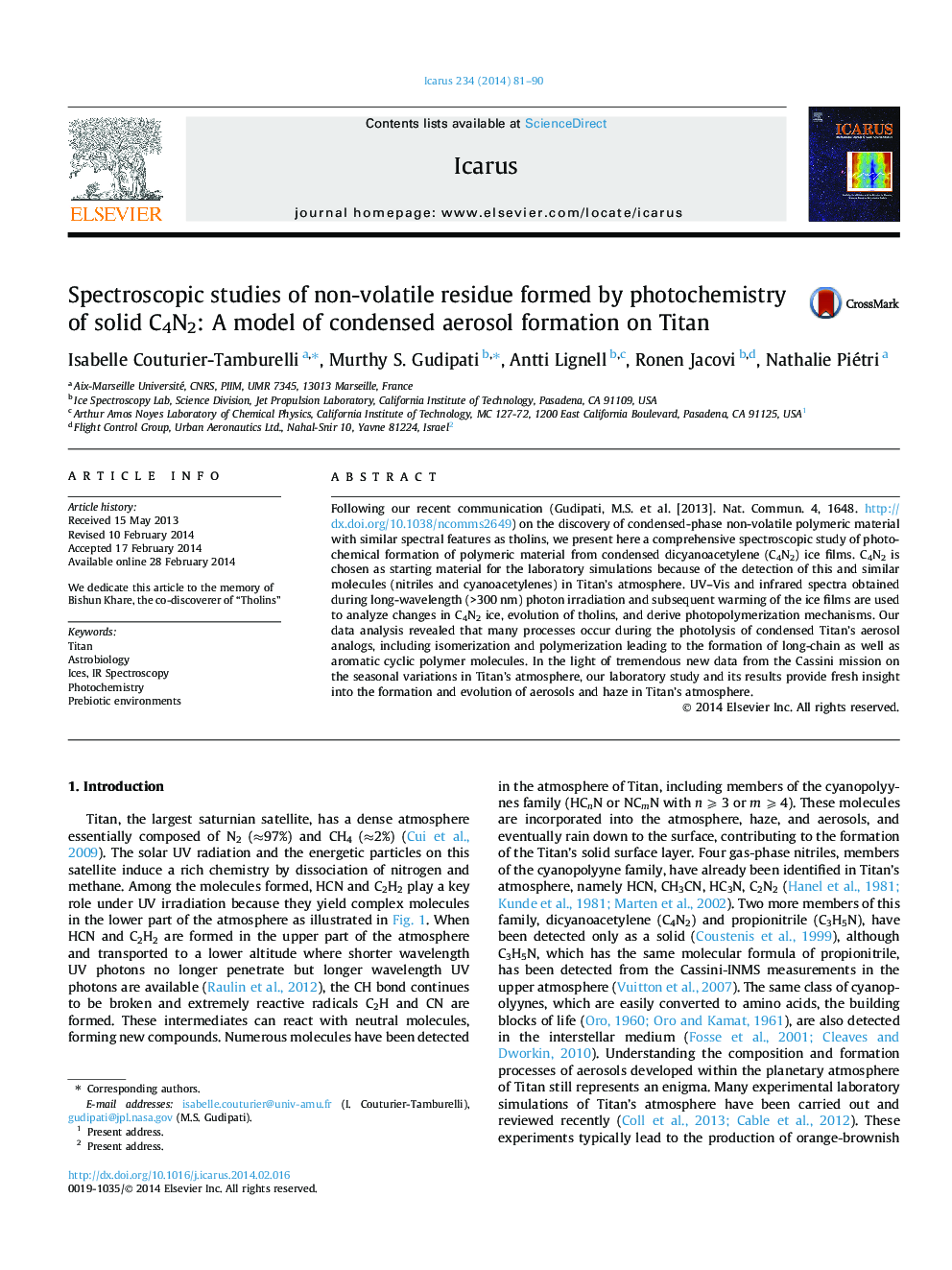| Article ID | Journal | Published Year | Pages | File Type |
|---|---|---|---|---|
| 8138183 | Icarus | 2014 | 10 Pages |
Abstract
Following our recent communication (Gudipati, M.S. et al. [2013]. Nat. Commun. 4, 1648. http://dx.doi.org/10.1038/ncomms2649) on the discovery of condensed-phase non-volatile polymeric material with similar spectral features as tholins, we present here a comprehensive spectroscopic study of photochemical formation of polymeric material from condensed dicyanoacetylene (C4N2) ice films. C4N2 is chosen as starting material for the laboratory simulations because of the detection of this and similar molecules (nitriles and cyanoacetylenes) in Titan's atmosphere. UV-Vis and infrared spectra obtained during long-wavelength (>300Â nm) photon irradiation and subsequent warming of the ice films are used to analyze changes in C4N2 ice, evolution of tholins, and derive photopolymerization mechanisms. Our data analysis revealed that many processes occur during the photolysis of condensed Titan's aerosol analogs, including isomerization and polymerization leading to the formation of long-chain as well as aromatic cyclic polymer molecules. In the light of tremendous new data from the Cassini mission on the seasonal variations in Titan's atmosphere, our laboratory study and its results provide fresh insight into the formation and evolution of aerosols and haze in Titan's atmosphere.
Related Topics
Physical Sciences and Engineering
Earth and Planetary Sciences
Space and Planetary Science
Authors
Isabelle Couturier-Tamburelli, Murthy S. Gudipati, Antti Lignell, Ronen Jacovi, Nathalie Piétri,
